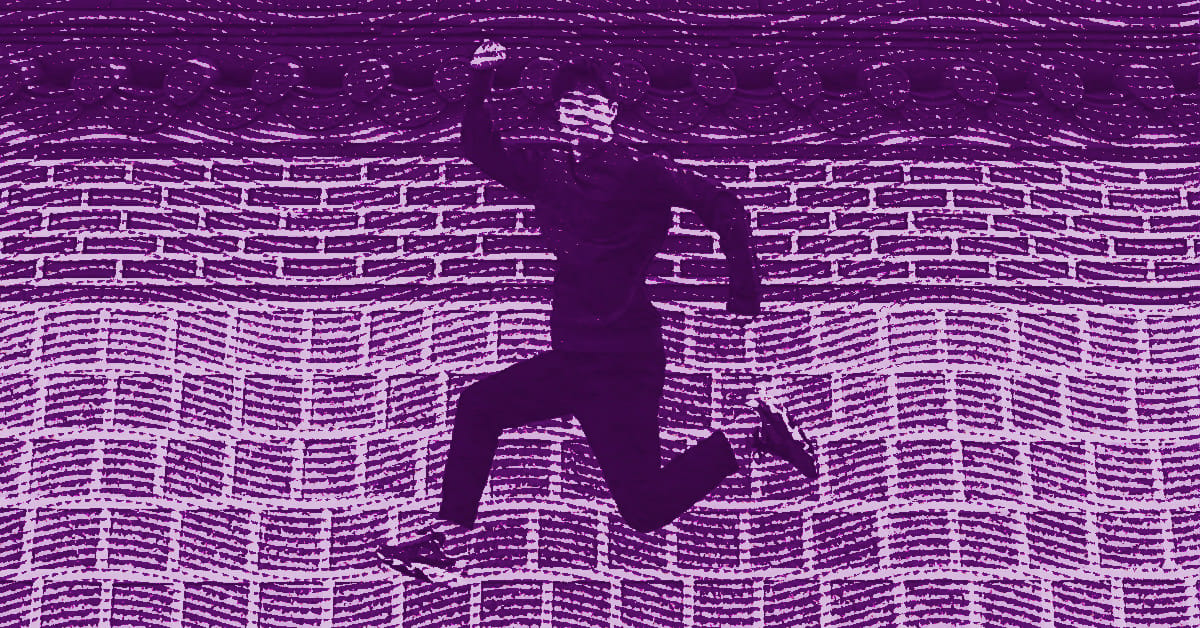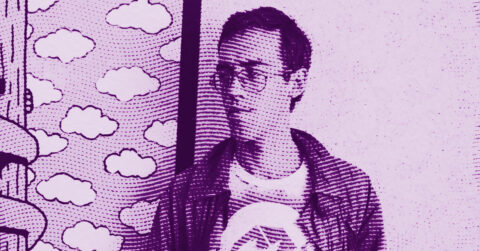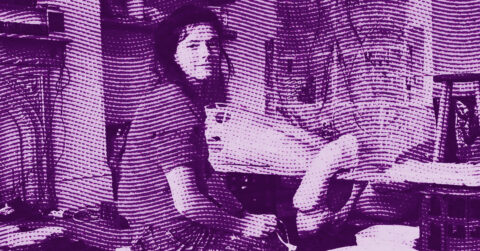Listen to me carefully, you bunch of snobs: if you still believe that digital animation is just a series of colorful images meant to entertain the uneducated masses, DeeKay Kwon is here to teach you a lesson in humility. This South Korean artist, born in 1989, spent a decade honing his art in the corporate temples of Google and Apple before breaking free to create works that question our relationship to time, existence, and contemporary human condition. His journey is that of a man who managed to escape the golden chains of salaried work to embrace complete creative freedom. Since 2021, DeeKay has been building a visual universe where the simplicity of retro video games mixes with the existential complexity of our modern lives. His animations, sold to collectors such as Cozomo de’ Medici for over a million dollars, are not mere commercial products: they are visual meditations on our fleeting passage through this world.
DeeKay’s work finds a particular echo in the thought of the French philosopher Henri Bergson, who devoted his life to rethinking the concept of time. In L’Évolution créatrice, Bergson establishes a fundamental distinction between the measurable time of science and the duration experienced by consciousness [1]. For the philosopher, scientific time is an artificial spatialization that cuts existence into discontinuous instants, whereas authentic duration is a continuous flow where past, present, and future intertwine inseparably. This vision finds a striking illustration in DeeKay’s animation Life and Death, where a character goes through all the stages of existence in thirty seconds. The artist does not merely juxtapose isolated moments: he creates a fluid continuity where each phase of life carries within it the traces of what was and the seeds of what will be. The yellow butterfly that guides the child at the beginning of the work reappears symbolically throughout the journey, embodying the memory specific to Bergson that crosses and unifies the entire existence.
Bergson’s conception of duration stands in radical opposition to the objective measurement of time by clocks. Bergson demonstrates that consciousness does not live in mathematical time but in a qualitative duration where instants melt into one another. DeeKay intuitively grasps this distinction when he animates the repetitive daily life of the urban worker in Busy Boy. The circular movements of the character going from sleep to the office and from the office to sleep do not represent a mere chronological succession: they express the lived experience of an alienating temporality where each day adds onto the previous one to form a heavy mass of monotony. This representation corresponds to what Bergson calls in La Pensée et le Mouvant the “duration that contracts or dilates” according to our psychological state [2]. The time of the weary worker stretches endlessly, while moments of family happiness in DeeKay’s works pass in a breath.
The animation Hands of Time takes this reflection even further. DeeKay literally depicts hands manipulating moments of life like objects, illustrating our modern relationship to temporality: we desperately try to grasp, hold on to, and control a time that inexorably slips away from us. This materialization of time corresponds exactly to what Bergson criticizes as an abusive spatialization of duration. We transform the living flow of our existence into a succession of fixed points, photographable moments, digital memories stored in our devices. DeeKay stages this contemporary tension between the natural flow of life and our obsession with its artificial preservation. His characters run, jump, fall, and get back up in a perpetual movement that refuses the deadly fixity of the frozen instant.
Bergson’s philosophy also finds resonance in DeeKay’s representation of aging. The philosopher insists that aging is not simply adding years but accumulating an inner duration that continuously enriches and transforms the being. In Life and Death, the character does not age by mere accumulation of age: he progressively becomes what his past has made of him. Each experience integrates into his very substance, modifying the way he moves, views the world, and interacts with his environment. This organic vision of lived time opposes the mechanistic conception of a life cut into standardized age slices. DeeKay understands that duration is not an empty container in which events unfold, but the very substance of our conscious existence.
Artistic creation itself in DeeKay’s work is inscribed in this temporality proper to Bergson. His animations are not constructed image by image in a purely technical manner: they spring from a creative intuition that grasps in a single movement the totality of the motion to be represented. This approach corresponds to what Bergson calls intuition, the faculty to coincide with the object of knowledge rather than cut it analytically. When DeeKay animates a run, a jump, a fall, he does not mechanically calculate the trajectory: he feels the movement from within and restitutes it in its living continuity. It is this ability to grasp real duration that gives his works their emotional power. We recognize in his characters not articulated puppets but beings animated by the very breath of life.
The second essential dimension of DeeKay’s work lies in his conception of animation as the art of the real. Here, an unexpected dialogue establishes itself with the creative philosophy of Hayao Miyazaki, the Japanese master of animation. Miyazaki states that “animation can represent fictional worlds, but I nevertheless believe that it must have at its heart a certain realism. Even if the world represented is a lie, the trick is to make it as real as possible” [3]. This requirement of realism within fiction itself also animates DeeKay’s work. His stylized characters, reduced to their minimal graphic essence, paradoxically carry a charge of authenticity superior to many hyperrealistic representations. Formal simplification in DeeKay’s work is not an impoverishment but a concentration: by eliminating superfluous details, he exposes the very essence of gestures, emotions, and human situations.
This search for reality through stylization joins the tradition of Japanese animation of which DeeKay is the indirect heir. Miyazaki insists that the animator must “create a lie so real that viewers will think the represented world might actually exist.” DeeKay precisely achieves this feat in works like I Love NY or Quarantine Life. His stylized New Yorks, minimalist apartments, geometric characters create an immediate sense of familiarity. We recognize our own experiences in these refined representations precisely because they capture the psychological and emotional essence of universal situations. DeeKay’s realism is not photographic but phenomenological: he represents not the external appearance of things but the way we experience them inwardly.
DeeKay’s animation technique, developed during his years at Apple and Google, also demonstrates this quest for reality through digital artifice. Contrary to industrial productions that multiply visual effects to dazzle the viewer, DeeKay favors an economy of means that places movement and emotion at the center of the work. This minimalist approach recalls Miyazaki’s principles about the importance of authentic movement in animation. Every gesture by DeeKay has weight, inertia, and trajectory that respect the physical and psychological laws of human movement. When his characters fall, they truly fall. When they run, we feel the effort in the rhythm of their steps. This attention to kinetic detail transforms simple geometric shapes into living beings who breathe, struggle, and rejoice.
DeeKay’s relationship to digital technology itself is interesting. Whereas Miyazaki expresses distrust toward computer-assisted animation, fearing it dehumanizes artistic creation, DeeKay represents a generation that grew up with these tools and bends them to a humanist vision. His use of After Effects and motion design software never aims for gratuitous technical prowess but always the expression of an emotional truth. This domestication of technology in the service of humanity echoes Miyazaki’s recurring concerns about the dangers of disembodied technology. DeeKay proves it is possible to create a deeply human digital animation where the tool does not erase the artist’s hand but amplifies it.
Recurring themes in DeeKay’s work, such as family, the passage of time, the balance between work and personal life, and childhood nostalgia, reveal a sensitivity that transcends cultural boundaries. His works Destiny, Yin Yang, Lovers’ Quarrel explore human relationships with a subtlety that avoids easy sentimentality. Just as Miyazaki rejects one-dimensional antagonists in favor of morally complex characters, DeeKay presents situations where joy and sadness, success and failure, connection and solitude intertwine. This emotional nuance elevates his work beyond entertainment to become a true exploration of the human condition at the beginning of the 21st century.
Here we are, facing an artist who refuses the easy ways of his time. DeeKay Kwon seeks neither free virality nor the hollow spectacle that characterizes so many contemporary digital productions. His philosophy, expressed in his own words “art is for everyone,” reveals a rare democratic ambition in the elitist world of digital art. Yet, this accessibility is not achieved by leveling down but by elevating towards the universal. By combining the conceptual rigor inherited from Bergson, the formal demand inspired by Miyazaki, and his own sensitivity as a transcultural artist, DeeKay creates works that simultaneously speak to the heart and the mind.
His personal journey, from Korean immigrant to Silicon Valley designer, then from employee to independent creator, infuses his art with an authenticity that cannot be simulated. When DeeKay animates the fatigue of the urban worker, it is not an external observation but an intimate knowledge of this modern alienation. When he celebrates the simple joys of family life, he draws from his own experience as a son, brother, and man who had to navigate between two cultures, two continents, two ways of life.
The future will tell if DeeKay Kwon will join the pantheon of great digital animation innovators. The spectacular sales of his works, the interest of auction houses like Christie’s and Sotheby’s, the recognition of his peers suggest that his influence will only grow. But beyond commercial and critical success, what truly matters is the ability of his works to touch millions of people around the world, to make them feel the fragile beauty of existence, to remind them that beneath the turbulent surface of our contemporary lives beats an unchanged human heart. In a world saturated with empty images and disposable content, DeeKay offers us something rare: moments of eternity captured in the relentless flow of digital time. This is his true achievement, and it is considerable.
- Henri Bergson, Creative Evolution, Paris, Presses universitaires de France, 1907
- Henri Bergson, Mind-Energy, Paris, Presses universitaires de France, 1934
- Hayao Miyazaki, cited in Far Out Magazine, June 2022
















